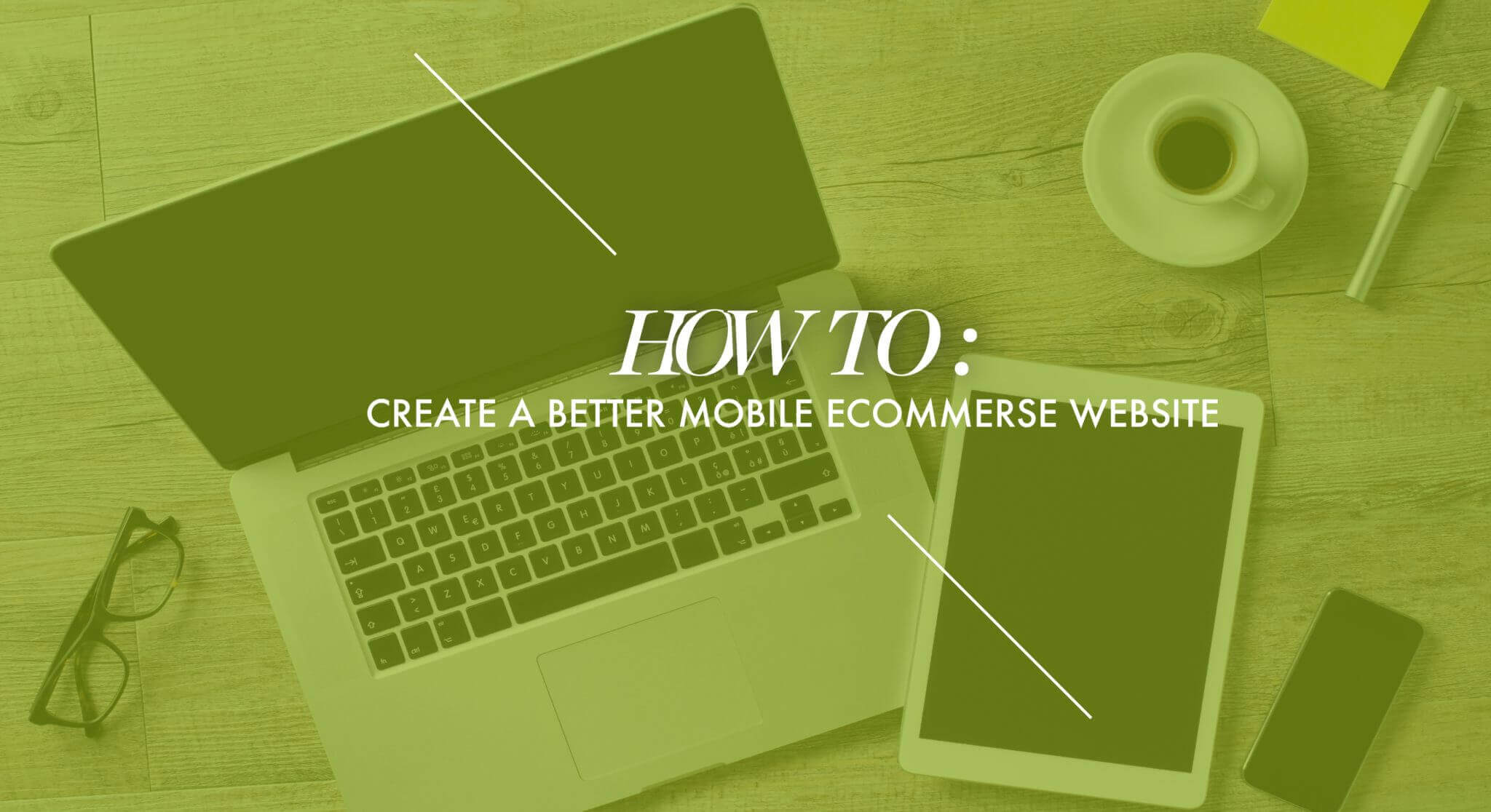
Making your ecommerce website work on mobile is crucial for your business.
If you’re used to thinking about your ecommerce business as a desktop-first operation, you’re behind the times. Google reported that the volume of mobile searches had surpassed that of desktop back in 2015, and there’s little reason to believe the world will ever go back.
These days, we use our phones for everything—including shopping. So, if you don’t have your ecommerce website optimized for mobile, you could be missing out on thousands of dollars in sales.
What does a mobile ecommerce website need? Good question. Let us walk you through it.
If you’re not responsive, you’re not mobile.
Ever visited a website only to find it displaying on your phone screen as if it were on a desktop? You have to zoom in to read the text, push the image from side to side, and hope you succeed in clicking on the right button. It’s a pain, and good ecommerce stores don’t do that to their customers.
Mobile ecommerce websites must be responsive. There’s simply no excuse for it anymore.
Let your users zoom in.
We all expect to be able to zoom in on an image when we’re on our desktops. Mobile ecommerce customers are no different. If you’re showing product images, make sure your users can zoom in to take a closer look.
Optimize form fields for touch keyboards.
Typing on a mobile phone can be tedious, which is why most smart keyboards offer plenty of autocomplete options. However, in an online form, typing information in via keyboard can lead to typos and frustrated users.
Fortunately, you can style form fields so that a phone will automatically switch to a numeric keypad rather than the full alphabetic one. This makes it easier for users to enter numeric information such as their credit card number, phone number, or zip code.
While you’re at it, it’s often a good idea to disable autocorrect on some form fields, especially for addresses. There’s nothing more annoying than trying to type in an unusual street name only to have it changed by mistake.
Ditch the pop-ups.
I can’t name the number of times I’ve had a mobile experience ruined by a pop-up I couldn’t get rid of. It’s the type of fatal user error that causes me to rage-quit a website, never to return. If you have pop-ups enabled on your site, check to make sure users can close them. Otherwise, you could be denying a frustrated visitor from your content.
Even if your pop-ups work, consider removing them from your mobile site. Do this especially if they’re your own pop-ups, and not a revenue source. No one wants to join your mailing list from their phone, and you’re more likely to alienate visitors than convert leads.
Rotating carousels disrupt user experience.
Rotating carousels are almost as bad as popups. Not only do many visitors treat them as such, often mistaking them for banner ads, but they are frustrating and confusing to use in a mobile setting. Many users struggle to click on the right slide, or don’t have time to read the information they want on a current slide before it changes.
Furthermore, carousels generally take up too much space when placed prominently at the top of a screen. Website owners could better use that space to promote a top-selling item or a call-to-action.
Make it easy to save shopping cart items for later.
Many users prefer to browse for store items on their phones while they’re out and about and then finish their purchases later on their computer. Mobile shopping allows users to browse products during a spare moment when they’re away from their computer. But many prefer to complete the purchase then it’s easier to review the sizing, quantities, and shipping options at their leisure.
One way to make this easier for users to save shopping carts for later in the day. If stock turnover is a problem, you can leave a notice letting users know when their shopping cart will expire. Similarly, make it easy for users to “like” products or add them to a wish list where it will be easy to find them again later.
Keep store information findable.
In the past, ecommerce was viewed as competing with brick-and-mortar establishments. Then the brick-and-mortar businesses realized they could turn their stores into ecommerce platforms, and omni-channel marketing was born.
Because of this, many of your mobile visitors view your ecommerce stores as an extension of your brick-and-mortar location (as they should!). They will get visit your site to look up a nearby store, and they expect that information to be easy to locate. That information should include your address, phone number, and store hours.
If you have a number of locations in an area, consider adding a store locator on your website to help visitors find the closest location. It’ll do you both a favor.
Be where your customers are.
Early adopters of ecommerce realized the potential of being able to access customers from the comfort of their own homes. Now, mobile ecommerce is poised to target customers from their pockets. It’s no longer a novelty, it’s an expectation.
You can—and should—meet this expectation for your visitors. When your customers search for you on their smartphones, you want to provide the same high-quality user experience they receive from your desktop store or their retail location. And, if you need help getting there, talk to us. We can help.
